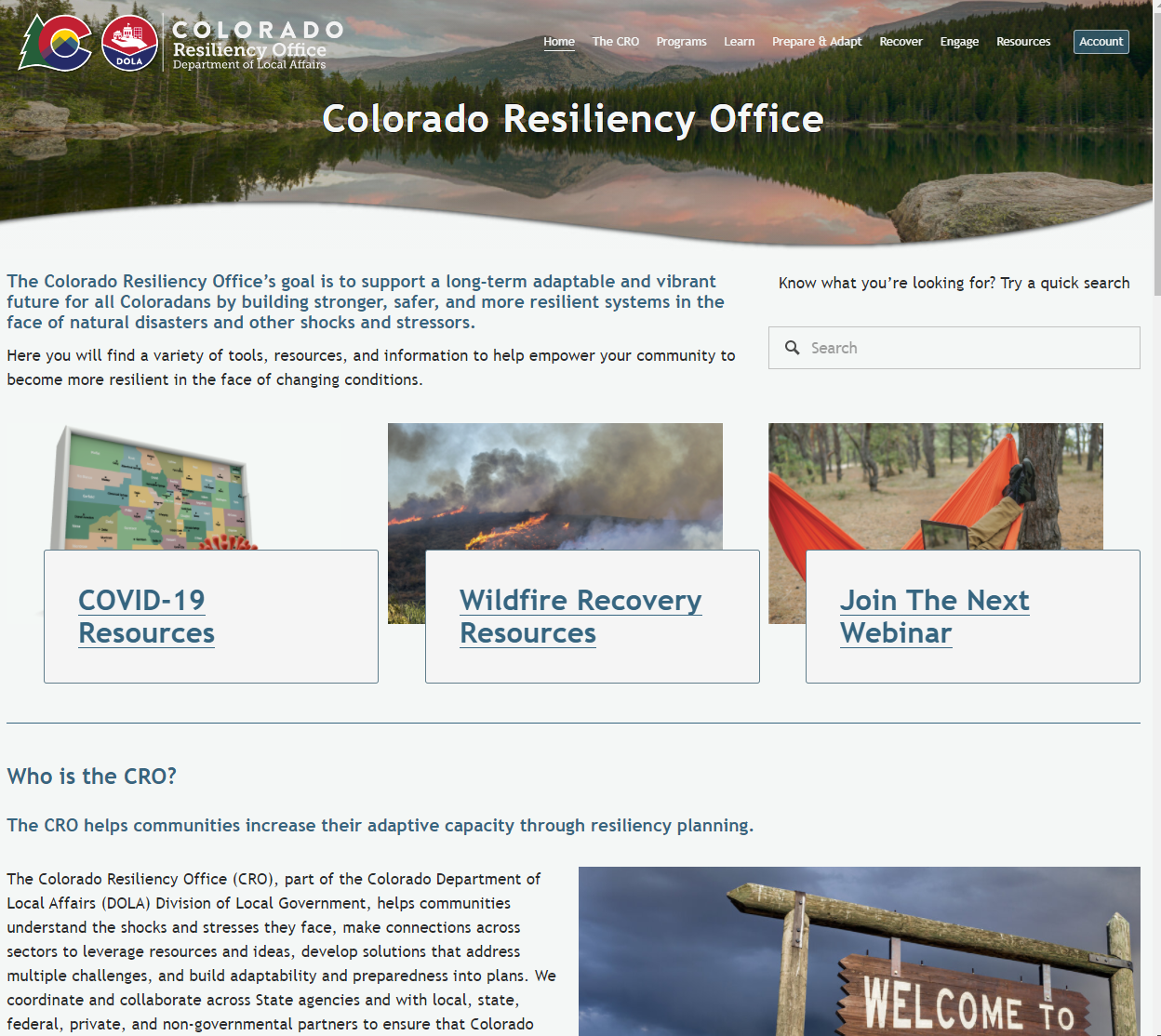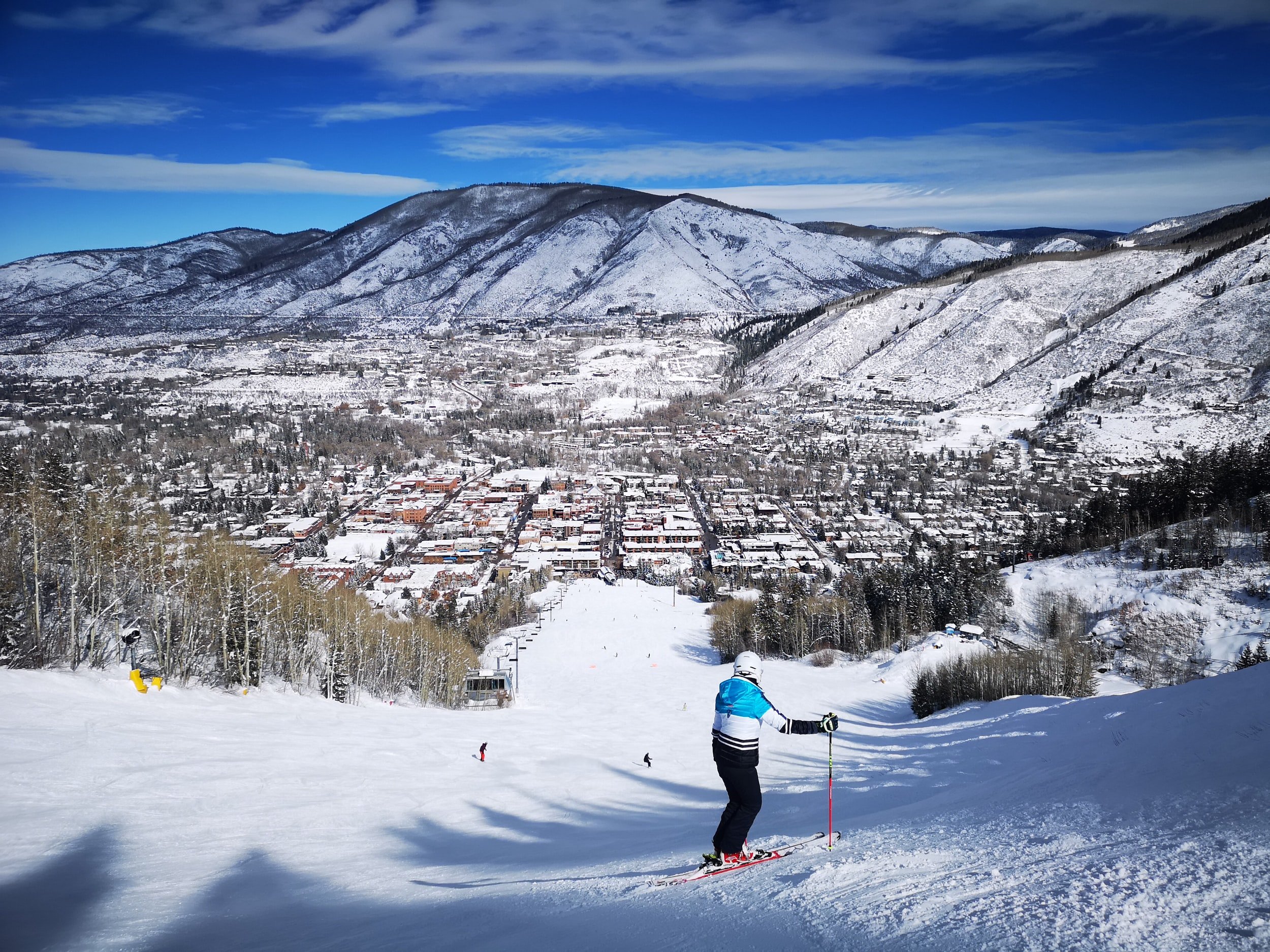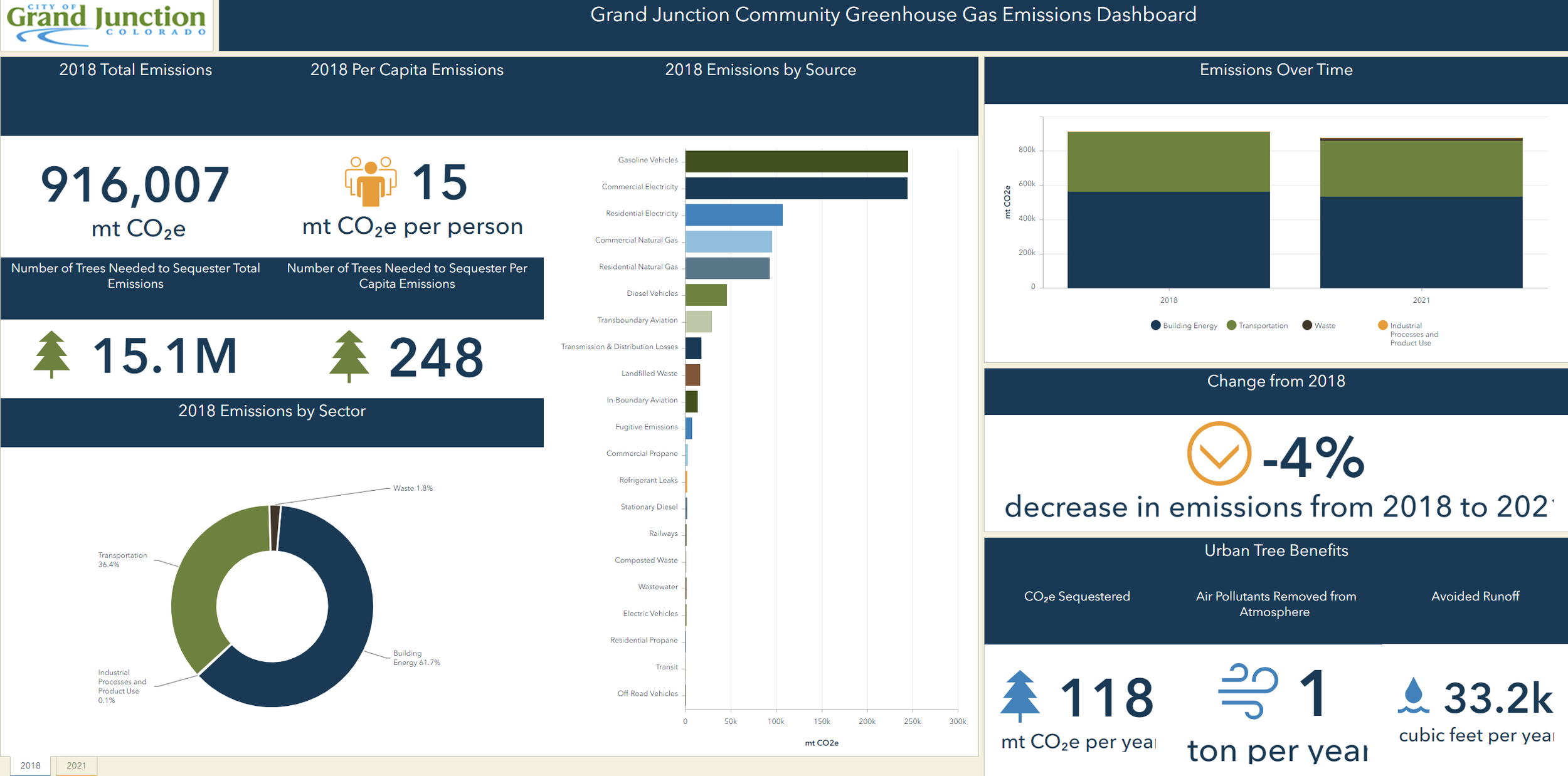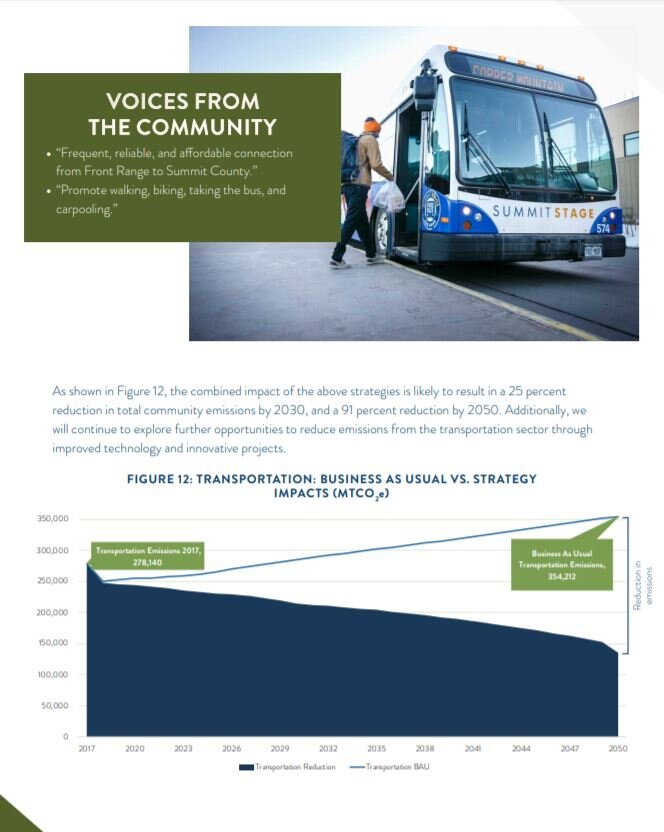Clear Creek County | Vehicle Electrification Plan
Vehicle electrification plan
Lotus lead the community engagement tasks for Clear Creek County, Colorado, and their Vehicle Electrification Plan. We created and disseminated a community survey to gather information about EV use and barriers to adoption. Our team also conducted 12 informational interviews with stakeholders across the spectrum from community leaders to the local utility. We convened one focus group to vet and confirm the data collected from the community, as well as co-create the strategies for the County’s EV readiness plan. Lotus then prepared a report detailing the results of our engagements with a clear description of the barriers to EV readiness in the community and many solutions to address those barriers. An important aspect of this project was our focus on the impacts of EVs on underserved communities. We made several key suggestions to address EV equity throughout the community in our report.
Colorado Energy Office | Rebuild, Re-energize, Recover Colorado
Lotus worked with the Colorado Energy Office (CEO) to complete an ArcGIS StoryMap website titled Rebuild, Re-energize, Recover Colorado. This website provides an overview of climate action work across Colorado and provides communities with resources to get started on taking climate action now. Check out the map below of large emitting facilities in CO. Click the +/- to zoom in and out, and click on the circles to find out more information on the facilities including which coal-fired power plants are closing in the next 10 years.
Lotus has conducted research focused on the financial, legal, technical, and communication barriers that are currently hindering the expansion of energy performance contracting in rural and small communities while creating a new approach that utilizes local and international best practices. Additionally, Lotus has evaluated low-income Community Solar Demonstration projects and their impact on energy burden, approaches for replicability, and overall effectiveness of reducing the energy burden. Lotus has worked closely with the CEO on energy performance contracting.
Here are some links to specific case studies: Delta-Montrose Electric Association, Empire Electric Association, Fort Collins Utility, Grand Valley Power, Holy Cross Energy, San Miguel Power Association, and Yampa Valley Electric Association.
Additional projects include the analysis of the Fulfillment of the Low-Income Carve-Out for Community Solar Subscriber Organizations and Accelerating EPC in Small and Rural Colorado Communities.
“Hillary’s ability to simultaneously manage project deliverables and keep team members on task while exercising her creativity to develop new programs is a unique skill set. Hillary knows how to manage and motivate to get the best out of her clients and collaborators. She is a delight to work with and will see any project through to a successful conclusion.”
“Emily was instrumental in the success of our (Colorado Energy Office) Energy Management Assistance Program. She provided key technical support to Colorado K-12 schools and her work lead to measurable energy savings and environmental benefits for program participants.”
Colorado Resiliency Office | Website
Lotus worked with a team of experts on behalf of the Colorado Resiliency Office to create an interactive website that helps communities understand the shocks and stresses they face, make connections across sectors to leverage resources and ideas, develop solutions that address multiple challenges, and build adaptability and preparedness into plans. As part of the project, the team created multiple toolkits and resources for communities to help proactively prepare for and adapt for changing conditions. Also, best practices on how to meet immediate, short-term, and long-term recovery needs in the aftermath of a disaster.
“I had the pleasure of recently working with Lotus Sustainability on a project to develop a new website and tools for Colorado communities to plan for long-term resiliency and recovery. Lotus’ expertise and leadership ensured that our final products were both technically sound and useful to our audience. Throughout the project, Lotus remained flexible and adapted to our changing needs.”
CORE GHG Inventories and Regional Summaries
Lotus is completing Pitkin County and the Roaring Fork Valley’s GHG Inventories and regional summaries; this includes inventories for the City of Aspen and Towns of Basalt and Snowmass. The work is supported by the Community Office for Resource Efficiency (CORE). Building off each communities’ past efforts, Lotus will help them determine how they are progressing towards their emission reduction goals. A data dashboard will provide the opportunity for the community to view emissions from different sectors, sources, and geographies.
Denver Public Schools | Climate Action Plan
climate action plan
Our work supporting Denver Public Schools and their students was recently highlighted by Vice President Kamala Harris as a model for others to follow.
Lotus worked with Denver Public Schools (DPS) to develop new goals and programs focused on GHG emissions reductions, renewable electricity, environmental justice and education, and resource management. The plan was be co-created with DPS stakeholders and included a strong focus on equity and accessibility as well as a fun, interactive, and engaging process. The new plan outlined a roadmap for achieving the goals laid forth in the recent DPS Climate Change Resolution. These goals included reducing greenhouse gas emissions by 90 percent of 2010 levels by 2050, prioritizing sustainability actions in schools and communities facing greater environmental injustice, and making sustainability a core value of DPS. Lotus also fully reworked the DPS website to drastically increase engagement with students, staff, and general public.
Lastly, Lotus created a program to help empower students to lead this effort to ensure that this work continues long after we are gone.
You can view the plan in Spanish here. Este plan es disponible en español AQUI.
“Lotus was pivotal in supporting us in the creation of a transparent, clear, and relatable climate action plan that will engage our greater community for years to come. Their ability to engage our stakeholders throughout the development was invaluable.”
“Vice President Kamala Harris says Denver students’ climate plan is a model for others to follow.”
Eagle County | Resiliency Plan
Lotus worked with partner organizations to complete Eagle County’s first Community Resilience Plan. In developing the plan, Lotus has led extensive stakeholder engagement and public outreach processes to ensure that the plan provides a roadmap for long term community vibrancy, health, success and sustainability for Eagle County.
“On behalf of our team, the RWG [Resiliency Working Group], and our community, I wanted to thank you for a great workshop this morning. I thought the presentation info and dialogue was excellent and exceeded my expectations for the work we would accomplish for the event”
Eagle County | Code Cohort
Lotus provided project management and facilitation for the Eagle County Code Cohort. The project included the facilitation of three meetings with representatives from each Eagle County jurisdiction to create a set of above code standards—including solar-readiness, EV-readiness, and electric-readiness—that jurisdictions could adopt alongside the 2021 I-Codes, specifically the 2021 International Energy Conservation Code (IECC). Equity, GHG reductions, and the needs of individual communities were discussed during the cohort meetings and a consensus was reached for the recommended code package.
The cohort included code package development and individualized community support to help each partner community with its code adoption process. Lotus worked with consultant partners Southwest Energy Efficiency Project (SWEEP) and Mozingo Code Group throughout the project to develop the code package for the region. The consultant team developed supporting materials such as fact sheets, customized presentations, training materials, and other individualized support requested by each community. Lotus and the consultant team attended council meetings and study sessions with staff to ensure the code package was understood and could be adopted by each leadership council.
Finally, Lotus facilitated a public engagement process for the new code package which included an informational webinar and community survey to understand community concerns and support for the new code package.
Below is a presentation about this project from the Mountain Towns 2030 conference in 2023.
Eagle County | Building Code Energy Modeling & Upfront Cost Analysis
In 2022, Lotus supported Eagle County in analyzing new construction code packages with electrification amendments to provide energy use and cost data which will be used to inform the County code update process in 2023. Lotus analyzed four code package options as they compare to Eagle County’s current new construction energy code, the 2015 International Energy Conservation Code (IECC). The code packages were evaluated by
upfront cost impacts,
greenhouse gas (GHG) impacts over the lifetime of the building, and
operational energy cost impacts over the lifetime of the building.
The code packages investigated in this study included the 2021 IECC without amendments, the 2021 IECC with an electric-ready amendment, the 2021 IECC with an electric-preferred amendment, and the 2021 IECC with an all-electric amendment. These code options were analyzed for single-family homes, multi-family complexes, and commercial properties. The scope of work consisted of:
Upfront Cost Analysis: A literature review of existing studies analyzing the cost impacts of updating energy codes from prior code cycles, in this case, the 2015 and/or 2018 IECC, to the 2021 IECC. Additional studies were reviewed to understand the upfront cost impacts and cost-effectiveness of three additional above-building code standards, including electric-readiness, electric-preferred, and all-electric provisions.
Energy Modeling: Energy modeling for three building types typical of Eagle County construction: a single-family home, a multifamily building, and a mixed-use commercial building. Each building type was modeled to meet four code standards: the County’s current energy code (2015 IECC), the 2021 IECC, the 2021 IECC plus an electric-preferred standard, and the 2021 IECC with all-electric systems. The modeling was conducted to evaluate total annual energy consumption, total annual energy costs, and greenhouse gas emissions over the lifetime of the building (40-year period) to understand the emissions and cost implications of advancing to a new building code. The single-family and multifamily energy models were developed using the National Renewable Energy Laboratory’s Building Energy Optimization Tool. The commercial building energy model was developed using the Department of Energy’s eQUEST tool.
The upfront cost analysis and the energy modeling will demonstrate which code options are the most cost effective and which will have the greatest contribution to reducing greenhouse gas emissions in the County. In addition, Eagle County will be participating in a code cohort with surrounding jurisdictions to review and adopt supporting amendments alongside the 2021 I-codes. This effort will help advise Eagle County on which supporting amendments will support the achievement of their climate action goals through their next phase of energy code adoption.
Eco-Products | GHG Inventories
Since 2015, Lotus has supported Eco-Product’s with their operational carbon footprint analysis. This work includes collecting and analyzing data for greenhouse gas emissions from the headquarters’ electricity and natural gas, business travel, employee commuting, materials management, and paper consumption. David Fridland can speak to our GHG Protocol work. We have been completing their annual inventory since 2016.
Lotus has also supported the writing of their Sustainability and Impact Reports for the last four years. To do so, Lotus has conducted informational interviews with key staff members and supplementary research to draft engaging, pithy text to showcase Eco-Products’ impactful work over the year in question.
“Eco-Products engaged Lotus to calculate our 2015 operational carbon footprint. This involved collecting and analyzing data for greenhouse gas emissions from our headquarters’ electricity and natural gas, business travel, employee commuting, materials management, and paper consumption. It also entailed updating our Excel-based tracking system and incorporating data for a company we recently acquired. Throughout the process, Hillary provided helpful suggestions and options. She documented all of the changes and decisions in an organized fashion, and submitted her work promptly. It could not have gone any more smoothly, and I can’t recommend Lotus highly enough. This was Eco-Products’ first time working with them, and it won’t be our last!”
Georgia Tech | Climate Action and Sustainability Projects
The Offices of Sustainability and Innovation at Georgia Tech contracted with Lotus to review, reorganize, and rewrite their existing sustainability action plan. Lotus synthesized the existing work to identify opportunities to increase clarity and streamline the narratives, goals, and strategies while ensuring the plan connects seamlessly with Georgia Tech’s overall guiding strategic plan. Through this review process, Lotus produced a revamped and designed plan that effectively communicates Georgia Tech’s sustainability goals and forthcoming work to internal and external stakeholders.
The Georgia Tech Sustainability Team also contracted Lotus to lead the creation of a Climate Action Plan. Lotus reviewed all materials to consolidate them into one plan that connects focus areas with the existing strategic plans through the narrative, as well as designing a plan that would work in conjunction with the Sustainability Next Plan. As part of this plan, Lotus developed a business-as-usual (BAU) forecast through 2050 to show projected emission changes that are relevant to the Georgia Tech campus and population. The BAU forecast was then used to model the impacts from a list of key GHG reduction strategies.
Lotus also completed a QA/QC of Georgia Tech’s greenhouse gas inventories going back to 2008. After this work was completed, Lotus created a new GHG inventory template for the FY2022 inventory that will be used in future years.
The Offices of Sustainability and Innovation at Georgia Tech also contracted with Lotus to create a Tableau dashboard that mimics the full functionality of the Impact Summary tab of the GHG modeling Excel tool developed for their Climate Action Plan. This dashboard includes the ability to turn strategies on and off and select key parameters for each strategy such as implementation dates and target values. Lotus created individual parameters for each strategy that allows users to adjust modeled emissions with full flexibility.
“The creation of this our university strategic sustainability plan was presented with many challenges including a wide variety of stakeholders, difficult timelines, and working within state institutional regulations. The team at Lotus stepped up to each challenge and worked with our needs to create a beautiful and engaging document. We are truly proud to be able to demonstrate our commitment to sustainability efforts by sharing our plan with the campus community and with the world.”
Grand Canyon Trust Colorado Plateau | GHG Inventory
Lotus helped develop the first GHG emissions inventory and BAU projection for the Colorado Plateau. We developed a bottom-up approach to estimate overall emissions based on 64 unique municipalities, including sources such as oil and gas drilling and processing, coal mine emissions, and carbon sequestration from farming practices. The Colorado Plateau covers an area of roughly 130,000 square miles and includes portions of Arizona, Colorado, New Mexico, and Utah. Read a summary of our findings.
“Working with Lotus has been an extremely positive experience. We came to Lotus in the research phase of a large project, and they were able to take our idea and run with it. From project design, to becoming experts in the subject area, Lotus created a defensible, scientifically sound greenhouse gas emissions inventory and forecast to 2050 for the entire Colorado Plateau. They were always available to answer questions, and even conducted an in-person training to teach our team how to replicate the inventory in the future. We can’t recommend Lotus highly enough, and hope to work with them again in the future.”
Grand Junction | Community GHG Inventory
Lotus developed Grand Junction’s 2018 and 2021 community GHG inventories; developed a business-as-usual forecast through 2040; completed a carbon sequestration analysis of the City’s urban forest and parklands; developed a dashboard to display the results of the emissions inventories; entered the emissions inventory data into ClearPath and CDP; and researched relevant resilience and climate adaptation metrics for the city to consider tracking. Additionally, Lotus synthesized the results of all deliverables into a final report while simultaneously providing high-level policy recommendations for the primary GHG sectors to help reduce emissions.
Holy Cross Energy | Greenhouse Gas Inventory
Holy Cross Electric Association, Inc. (HCE) has a vision to lead the responsible transition to a clean energy future for their 43,000 plus members. In 2018, HCE set a goal/target to provide 70 percent clean energy by 2030 (Seventy70Thirty) and reduce greenhouse gas emissions associated with their power supply by 70 percent based on 2014 levels. To accurately measure and report these targets, Lotus was hired to complete a 2018 greenhouse gas inventory and review power supply chain inventories for 2005, 2014, and 2018. The inventory is utilizing the Climate Registry’s General Reporting Protocol and Electric Power Sector Protocol.
“We had the good fortune of working with Hillary and the Lotus Engineering team to assemble Holy Cross Energy’s Greenhouse Gas Inventory. They were a pleasure to work with through the process and their expertise was indispensable. They helped us iron out difficult questions related to which emissions reporting standards to follow, how best to collect and organize our data, and how to account for every last emission related to our organization that is meaningful enough to track. Once our inventory was complete, we not only had a solidified baseline for our previous years emissions but also a inventory tool that is easily updated by our internal staff for future years. We would absolutely hire Lotus again the next time we need GHG related consulting support.”
Kamehameha Schools | GHG Inventory and Carbon Stock Assessment
Kamehameha Schools (KS) is a Native Hawaiian educational trust and is one of the largest organizations in Hawaiʻi. KS operates an educational system that includes preschools, three K-12 campuses, community education, and scholarships across the Hawaiian Islands. In addition, KS is the largest private landowner in the State, stewarding 10% of Hawaiʻi’s land-base with a major stake in native forestry. Lotus, in partnership with Sustainable Pacific, conducted a greenhouse gas inventory and carbon stock assessment for KS. Guided by this data, the Consultant Team provided carbon reduction recommendations as well as a carbon stock and sequestration opportunities analysis.
Maui County | Climate Action and Resilience Plan
Lotus developed Maui County’s Climate Action and Resiliency Plan. The plan included four greenhouse gas inventories (two municipal inventories and two community inventories) that informed how to achieve their goal of zero emissions and a carbon-neutral economy by 2045. Community and stakeholder engagement was central to the project. The project was heavily focused on engaging community voices and integrating Hawaiian cultural values. Our team worked with staff from the County and community leaders to create strategies that would have an impact on the climate and align with indigenous ways of knowing. Key parts of the plan are translated into ʻŌlelo Hawaiʻi so that all may understand the importance of the goals and the role community members play to achieve them. The climate change mitigation strategies addressed in the plan focused on municipal operations, building energy, transportation, waste, land use (including agriculture and natural resources), and public education and outreach. The plan also presented resilience strategies by integrating the concepts of self-sufficiency, nature-based solutions, resilient infrastructure, and strategic relocation. This 18-month project demonstrates our expertise in equitable community engagement, technical knowledge, and clear communication of a multi-dimensional project.
New Mexico State University | GHG Emissions Inventory
Lotus completed the first greenhouse gas emissions analysis for New Mexico State University's (NMSU) main campus in Las Cruces for the 2018-2019 school year. This inventory included several scope 3 emissions sources, including employee commuting, business travel, waste, and wastewater treatment. The 2019 fiscal year inventory covered all sources of emissions generated on campus, including through the cogeneration systems within the campus facilities. NMSU was also interested in understanding what the campus' emissions were in the 2005 fiscal year. To analyze this, Lotus collected historic data from the university on energy use, campus population, and changes in buildings over the year to estimate emissions back to the 2005 fiscal year. Based on the data, NMSU has significantly reduced its emissions since 2005. The 2019 inventory and 2005 backcast put NMSU on a path of identifying the major sources of emissions and developing programs and policies to help reduce those emissions over the coming years.
Pierce County, WA | GHG Inventory
Lotus developed 2015 and 2019 municipal operations GHG inventories for Pierce County, Washington. Lotus analyzed building level data and estimated emission factors for several utilities from which the County receives electricity. Additionally, Lotus created an inventory management plan (IMP) documenting all data sources and methods used in the inventory. The IMP also included instructions for updating inventories enabling Pierce County to develop their own inventories in the future.
“Lotus conducted Pierce County’s operational greenhouse gas emissions inventory. Their level of knowledge and expertise made the process straightforward and painless, analyzing diverse datasets and distilling complex calculations into sharable narratives. Frequent communication, quick turnarounds, and the team’s positivity made it an overall great experience.”
Pitkin County, CO | Embodied Carbon Analysis
Lotus conducted data analysis for Pitkin County and the Roaring Fork Valley, in partnership with Brightline Group, to estimate residential climate emissions and embodied carbon from the construction and home management sectors. This data was to guide local policy development. Using a data-storytelling process, Lotus detailed the impacts from the construction and home management economies on the region’s greenhouse gas emissions.
Key findings from the Embodied Carbon Analysis can be found HERE
Routt County and City of Steamboat Springs | GHG Emissions Inventory and Climate Action Plan
GHG Emissions inventory and climate action plan
Lotus has been hired twice by Routt County (with the support of Steamboat Springs) to complete sustainability projects. In 2019, Lotus worked with Routt County and Steamboat Springs to complete a 2018 GHG emissions inventory that was GPC-compliant. Lotus performed all data collection and analysis, developed a City- and County-specific emissions reporting tool, backcasted (until 2005) and forecasted (until 2050) emissions, developed an inventory management tool, and wrote an inventory summary report. In 2020/2021,
Lotus led the development of Routt County’s Climate and Adaptation Action Plan which included leading an informed stakeholder engagement process considering equity, modeling the impact of emission reduction strategies, and developing an aspirational yet achievable Climate Action Plan for the County and each municipality located within the community. Lotus also helped design a public-facing website to assist with community engagement.
You can track the progress in implementing the plan HERE.
Summit County, CO | Climate Action Plan & Climate Equity Plan
The jurisdictions, municipalities, ski areas, and institutions in Summit County, convened by High Country Conservation Center (HC3), contracted with Lotus to create a Climate Action Plan for the community. Lotus guided and supported the entire development process, which included conducting Summit County’s first GHG emissions inventory. Lotus facilitated and led the stakeholder engagement process that informed the development of Summit County’s Climate Action Plan in collaboration with the High Country Conservation Center. Our team convened meetings of stakeholders and experts, provided education and background on climate change, and facilitated conversations to develop strategies that will reduce emissions and achieve the goals of the Climate Action Plan for this mountain community. The development process also included modeling the impacts of stakeholder-selected strategies to determine emissions reductions, energy use, and other benefits; forecasting a business-as-usual case scenario; and providing the community with a final Climate Action Plan that defines aspirational targets for climate mitigation and resiliency and establishes a path towards achieving these goals.
Lotus ultimately developed a Comprehensive GHG Inventory and an aspirational yet achievable Climate Action Plan for the County.
Since completing the County’s Climate Action Plan, the jurisdictions in Summit County embarked on implementation work. Lotus worked with the High Country Conservation Center to update the County’s GHG inventory with 2021 data and develop a Climate Equity Plan that specifically details projects and programs to enhance equity in the community through the implementation of climate action work. Lotus facilitated an equity steering committee that included representatives from local community-based organizations, local governments, and agencies serving disproportionately impacted communities in Summit County. The Steering Committee advised on the development of a tri-lingual public survey, listening sessions, and informational interviews to guide the development of climate equity strategies that will supplement the existing climate action work. During the implementation of this work, HC3 will continue to work with Steering Committee members through the strong relationships that were built in this process to ensure that climate equity strategies meet their intended goals in supporting benefits for all Summit County residents.
Below is a presentation on Summit County’s Climate Equity Plan from Mountain Towns 2030.
“Lotus’ expertise was instrumental in developing our community’s climate action goals and understanding what it will take to meet them. Their depth of knowledge and nimble facilitation skills were a tremendous asset to our planning process.”








































